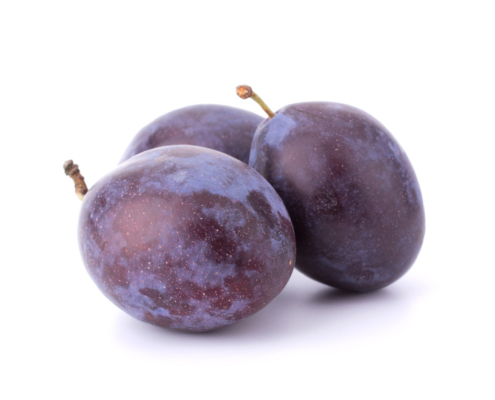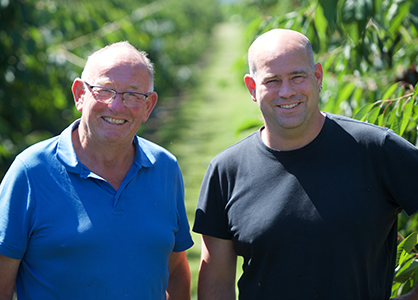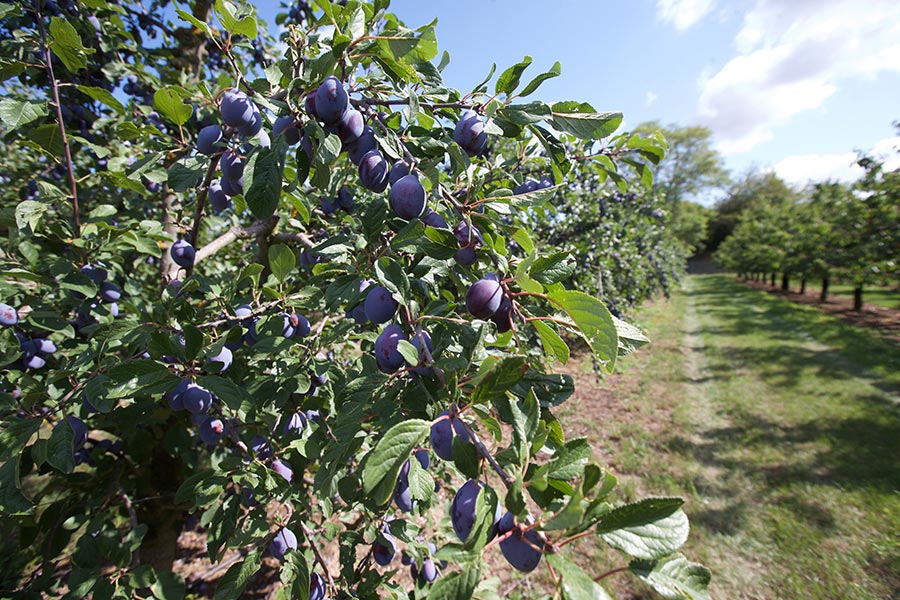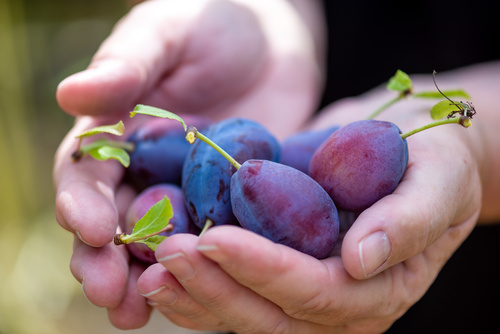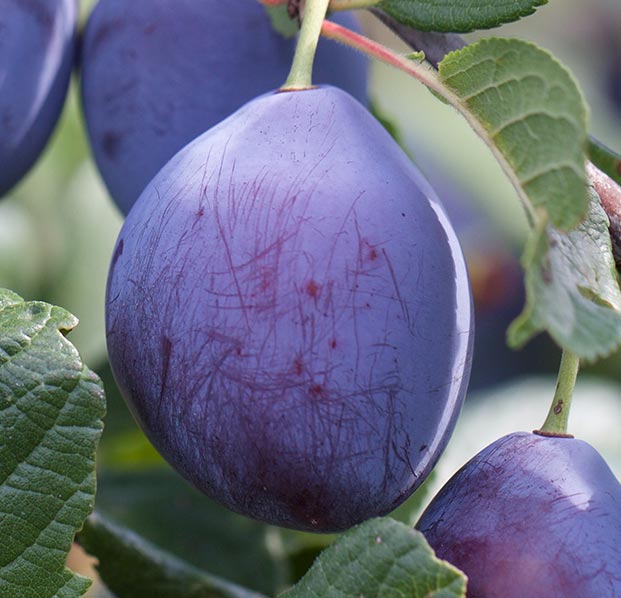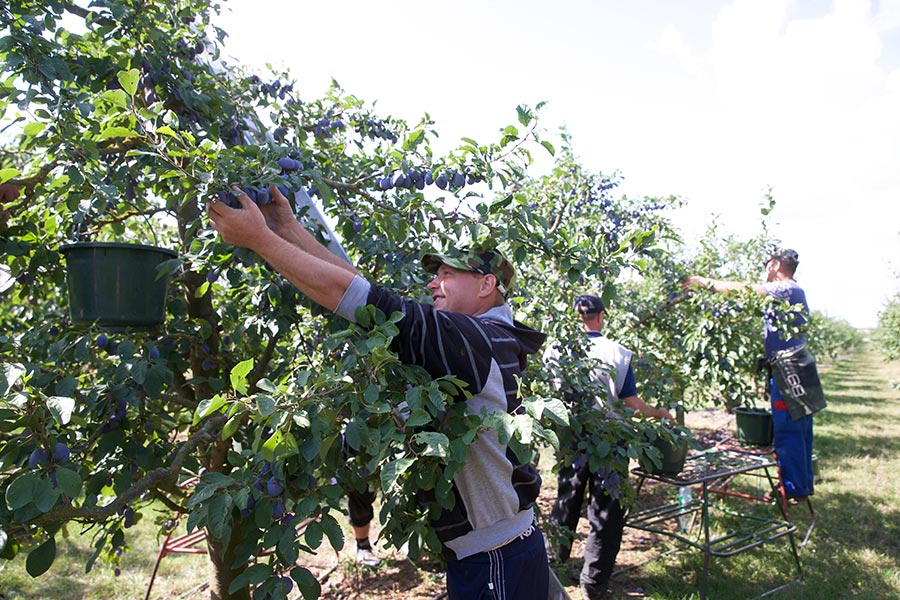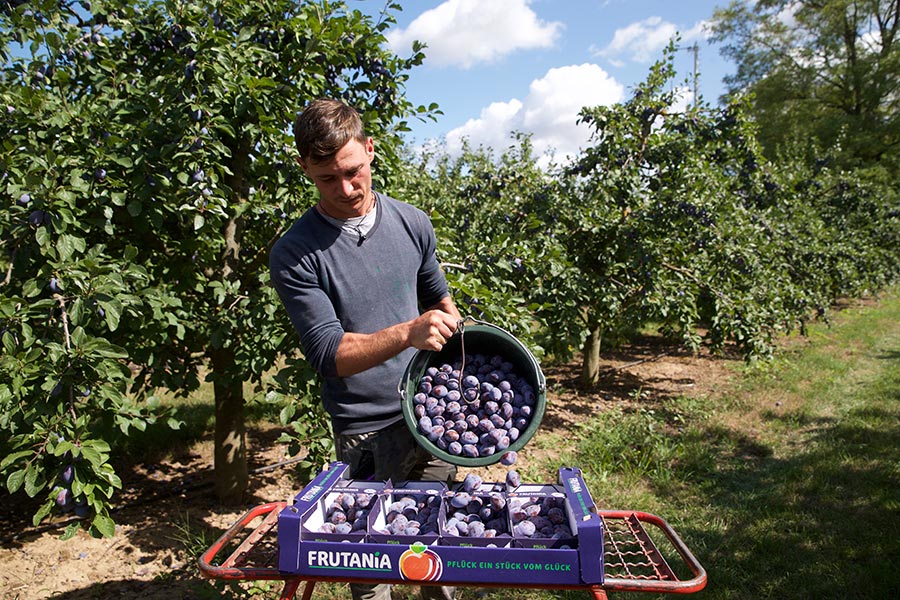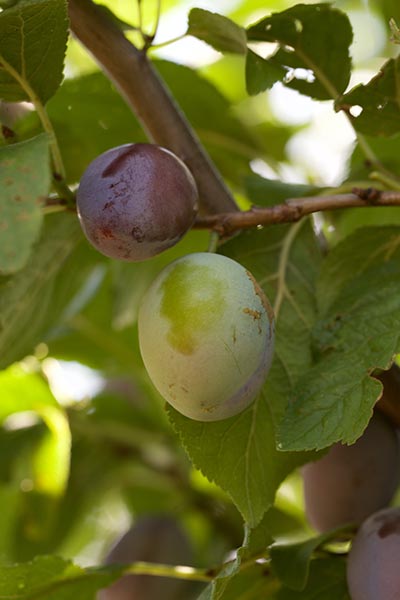Our plums
Our plums are blue to purple, oval fruits with golden-yellow flesh, firm outside and soft inside, stone-soluble, juicy, sweet-tart and aromatic – a true happiness!
Martin Krupp, one of our growers for plums:
“Working in nature and being able to inspire and pass on my passion for plums to consumers.”
The fifth generation of the Krupp family has been farming in the county in the immediate vicinity of the Ahr Valley since 1880. Spoiled by the sun, cherries, mirabelles, pears and plums thrive here today under the hand of Peter and Martin Krupp. The focus is on integrated-controlled cultivation of cherries, mirabelles and plums, which ripen in picturesque plantations.
Cultivation methods
Plum trees form a permanent crop and require a humus-rich, calcareous soil with sufficient moisture. They like mild, wind-protected locations and are self-fruitful.
Picking
Plums are picked by hand with stalks in boxes or buckets.
Quality feature
A special quality feature of plums and damsons is the so-called fragrant film. It protects the fruit from moisture loss. This natural wax layer should therefore be washed off just before consumption or further processing.
Maturity levels
Plums ripen at the same time and are therefore harvested once and completely.
Our varieties
Early varieties: Katinka | St. Hubert | Tegera
Medium-early varieties: Cacak’s Beautiful | Hanka | Topfive | Hanita
Medium late varieties: Auerbacher | Toptaste | C. Fertile | Top | Topper | Jojo | President
Late varieties: Ortenauer | Hauszwetschge | Elena | Topend Plus | Presenta
Frutania plums
Durch eine intensive Zusammenarbeit mit unseren Produzenten aus allen bedeutenden Anbauregionen Deutschlands, bieten wir eine lange natürliche Saison mit entsprechend langem Erntefenster. Wir haben Zugriff auf große Mengen und sind weitestgehend witterungsunabhängig durch die Streuung der Produktion auf verschiedene Regionen. So können wir tagesgenau disponieren.
Die Zwetschgensaison geht von Ende Juni bis Mitte Oktober. Sie startet mit den ersten frühen Zwetschgen aus Ungarn, Bosnien & Mazedonien, darauf folgen die ersten deutschen Frühzwetschgen. Bis Mitte Oktober ernten wir Zwetschgen aus späten Lagen und geschütztem Anbau. Frutania bietet immer frisch geerntete Ware und keine Langzeitlagerung im CA.
Consumer tips
Purchasing
You can recognize ripe plums by their deep, reddish-blue color, while ripe plums are dark blue. Their natural wax layer should be undamaged and they should smell pleasant. If the fruits yield to light pressure, they are optimally ripe.
Storage
If you remove the stones beforehand for storage, the plums will not become bitter. Depending on the variety, they keep up to seven days in the refrigerator. Plums should not be stored with broccoli, cauliflower, tomatoes or cucumbers, as they can easily take on the odor of these vegetables.
Preparation
Plums or damsons taste good fresh, as cake, plum puree, compote or jam, as a sauce for pork, game or poultry, as plum liqueur or brandy.
The plum
Small encyclopedia
The fruit of “Damascena” (Damascus) is spicy-sweet and aromatic, has a beautiful purple color and its core is easily soluble. These properties make them particularly popular for further processing into mush and compote, cakes, dumplings, brandies and liqueurs. And even fresh this stone fruit tastes incomparably delicious and is of course very healthy!


